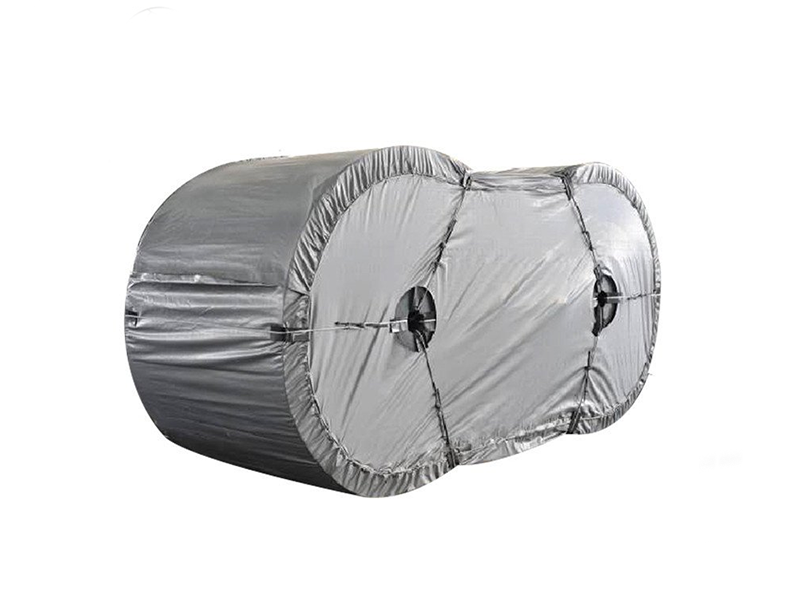How to choose the right conveyor belt material for your application?

Introduction
Conveyor belts are essential components in a wide range of industries, including manufacturing, mining, agriculture, and logistics. They are used to transport materials from one location to another efficiently and safely. Choosing the right conveyor belt material is crucial to ensure optimal performance, durability, and costeffectiveness. This article will guide you through the process of selecting the appropriate conveyor belt material for your specific application.
Understanding Conveyor Belt Materials
Conveyor belts are typically made from various materials, each with its unique properties and advantages. The most common types of conveyor belt materials include:
Rubber: Rubber is a versatile material known for its flexibility, abrasion resistance, and ability to handle heavy loads. It is commonly used in mining, quarrying, and port applications.
Polyurethane (PU): PU belts offer excellent abrasion resistance, tear strength, and chemical resistance. They are ideal for food processing, pharmaceutical, and chemical industries.
Polyvinyl Chloride (PVC): PVC belts are lightweight, flexible, and easy to clean. They are suitable for light to mediumduty applications in industries such as food, packaging, and automotive.
Thermoplastic Polyolefin (TPO): TPO belts combine the benefits of rubber and polyethylene, offering good abrasion resistance, tear strength, and lowtemperature flexibility. They are often used in automotive, appliance, and general industrial applications.
Stainless Steel: Stainless steel belts are highly durable and resistant to corrosion, making them suitable for harsh environments and hightemperature applications in industries like food processing, pharmaceuticals, and chemical processing.
Fabric: Fabric belts are made from woven or nonwoven materials and are often used in light to mediumduty applications where flexibility and breathability are required, such as in the textile and printing industries.
Factors to Consider When Choosing a Conveyor Belt Material
When selecting a conveyor belt material, several factors must be taken into account to ensure compatibility with your application. These factors include:
1. Load Capacity
The weight and size of the materials being transported will determine the required load capacity of the conveyor belt. Heavier loads require more robust materials with higher tensile strength and impact resistance. Rubber and PU belts are generally suitable for heavyduty applications, while PVC and fabric belts are better suited for lighter loads.
2. Environmental Conditions
Consider the environmental conditions in which the conveyor belt will operate. Factors such as temperature, humidity, exposure to chemicals, and UV radiation can affect the belt's performance and lifespan. For example, stainless steel belts are ideal for hightemperature and corrosive environments, while PU belts offer excellent resistance to chemicals and abrasion.
3. Abrasion Resistance
If your application involves transporting abrasive materials, such as gravel, sand, or coal, it is essential to choose a conveyor belt material with high abrasion resistance. Rubber and PU belts are known for their excellent abrasion resistance, making them suitable for demanding applications.
4. Tear Strength
Tear strength refers to the belt's ability to resist tearing forces. Applications involving sharp or jagged materials may require belts with high tear strength to prevent damage. Rubber and PU belts typically offer superior tear strength compared to other materials.
5. Chemical Resistance
For applications involving exposure to chemicals, it is crucial to select a conveyor belt material that can withstand the corrosive effects of the substances. PU belts are highly resistant to a wide range of chemicals, making them an excellent choice for chemical processing and pharmaceutical industries.
6. Temperature Range
Different conveyor belt materials have varying temperature tolerances. Ensure that the selected material can operate effectively within the temperature range of your application. Stainless steel belts are suitable for hightemperature environments, while fabric belts are better suited for cooler temperatures.
7. Food Safety Regulations
If your conveyor belt will be used in the food industry, it must comply with strict food safety regulations. Materials such as stainless steel, PU, and PVC are commonly used in food processing applications due to their hygienic properties and ease of cleaning.
8. Budget Constraints
Finally, consider your budget when choosing a conveyor belt material. While some materials may offer superior performance, they may also come at a higher cost. Evaluate your requirements and prioritize the features that are most important for your application to find a balance between quality and cost.
Conclusion
Selecting the right conveyor belt material is a critical decision that can significantly impact the efficiency and reliability of your operations. By considering factors such as load capacity, environmental conditions, abrasion resistance, tear strength, chemical resistance, temperature range, food safety regulations, and budget constraints, you can make an informed choice that meets the specific needs of your application. Whether you opt for rubber, PU, PVC, TPO, stainless steel, or fabric, ensure that the chosen material aligns with your operational requirements and contributes to the overall success of your business.
Related News

